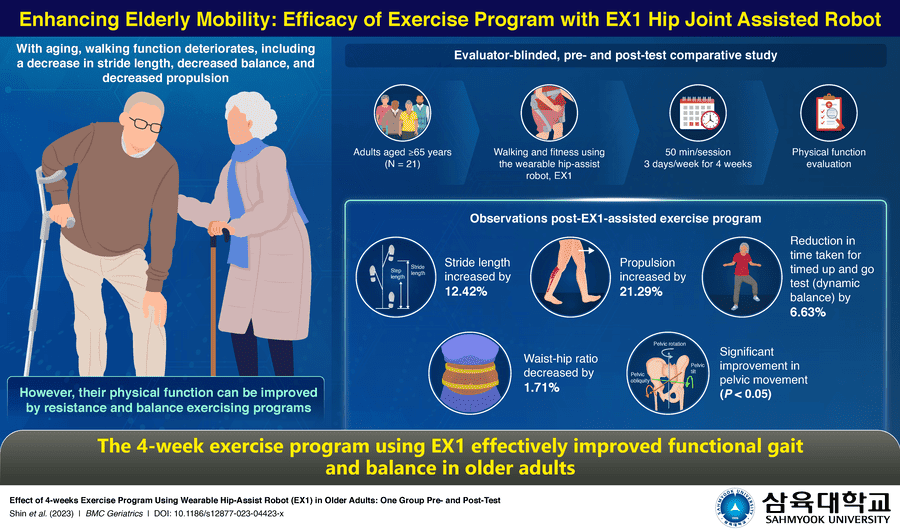Study finds Samsung wearable “hip-assist” robot can improve mobility in older adults

A new study by researchers at Sahmyook University in Korea has found that a wearable robot designed by Samsung Electronics can significantly improve physical functions and balance in older adults.
Researchers evaluated the efficiency of a new wearable “hip-assist” robot, EX1, in improving the mobility, dynamic balance, and range of movement in the elderly over a four-week period, with the results showing that it effectively improved functional gait.
The study is based on how the natural ageing process often results in a notable reduction of muscle mass, particularly in the lower limbs. This decline, in turn, leads to a gradual decrease in physical activity among older adults, as the weakening of lower-limb muscles heightens the risk of falls.
With aerobic and balancing exercises having the potential to enhance physical function and mitigate the risk of falls in the elderly, the device is designed specifically to enhance balance and movement.
Samsung Electronics developed EX1, an exercise assistance robot, with the goal to amplify physical function and strength in senior individuals. This advanced robotic aid offers tailored workouts with both assistive and resistive modes, aiming to prevent falls and bolster overall health in this demographic.
Led by Professor Wan-hee Lee from Sahmyook University, researchers assessed the effectiveness of EX1 over a four-week combined exercise program with 21 older adults aged 65 years or above. Their study, published online in BMC Geriatrics, unveiled significant findings regarding EX1’s role in enhancing exercise outcomes in this demographic.
Highlighting the importance of EX1, Professor Lee explains, “Using the wearable robot EX1, older adults can effectively perform simple exercises such as walking and fitness, thereby improving their quality of life. EX1 can increase their participation in exercise and serve as a guideline for exercising the right way.”
The supervised exercise program consisted of walking, and strength, and balance exercises, wearing EX1 for 50 minutes per session, three times a week for four weeks.
Researchers found that the adults stride length improved by more than 12 per cent, while propulsion increased around 21 per cent in subjects who wore EX1 for 50 minutes a day, three times a week for a month.
A noticeable enhancement, especially during mid-walking, was attributed to the assistive mode of EX1. This mode notably improved stride length, affecting forward movement in straight walking. Moreover, pelvic movement in three planes significantly improved, aligning within normal ranges, fostering efficient walking by reducing energy consumption and bolstering stability through extended feet and a lower body center.
These findings suggest that although the 4-week exercise period was relatively short for older adults and did not notably enhance muscle strength, EX1 still displayed positive effects on improving gait function and balance ability in this population.
Professor Lee concluded: “Our findings provide a solid foundation for developing various types of improved and advanced wearable robots. This will further expand the global wearable robot market, promoting further research and commercialization.”
The study demonstrates how assistive robotics could becomes more prevalent in the future. Last year technology firm Centaur Robotics trialled a two-wheeled, self-balancing device for the hospitality industry.


